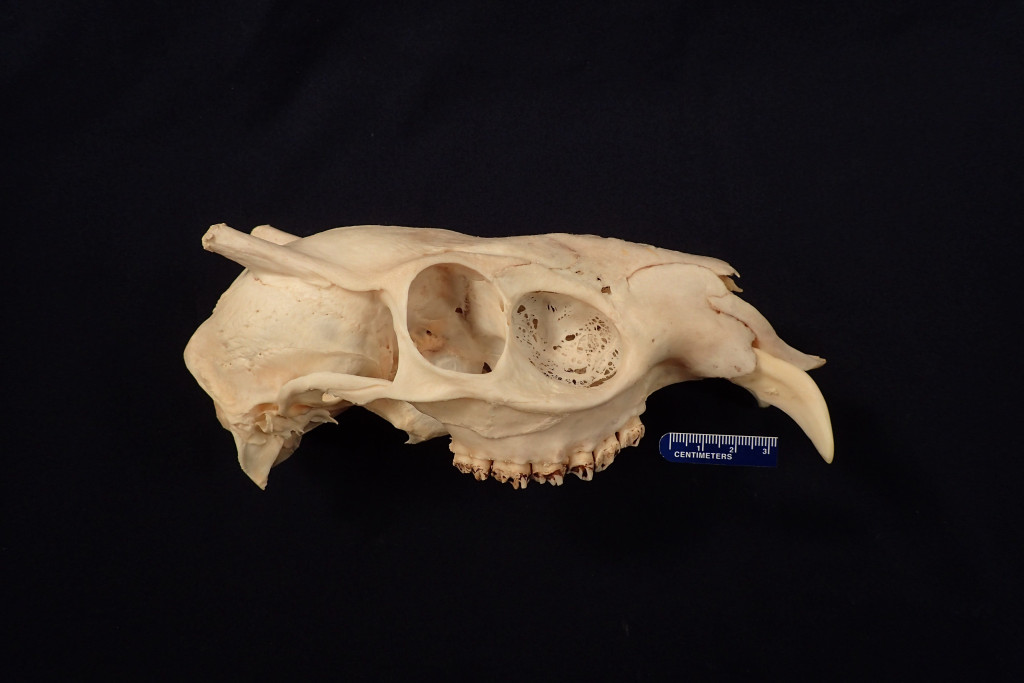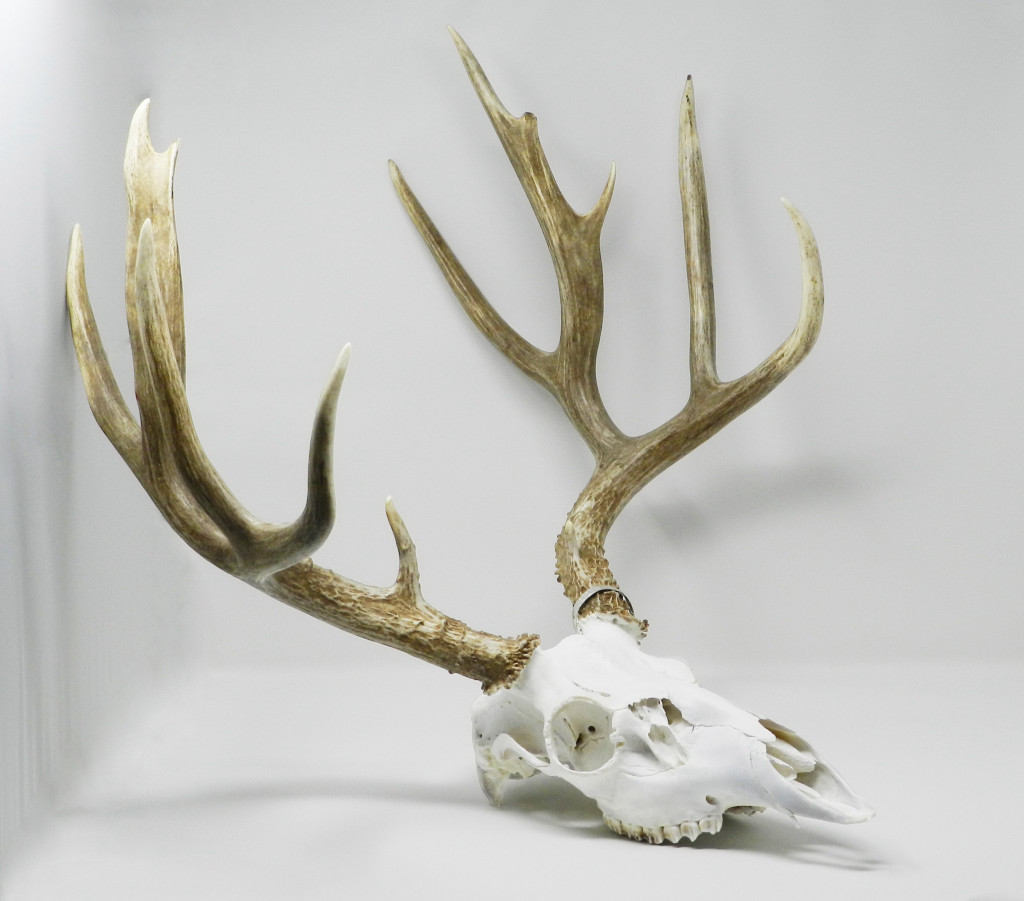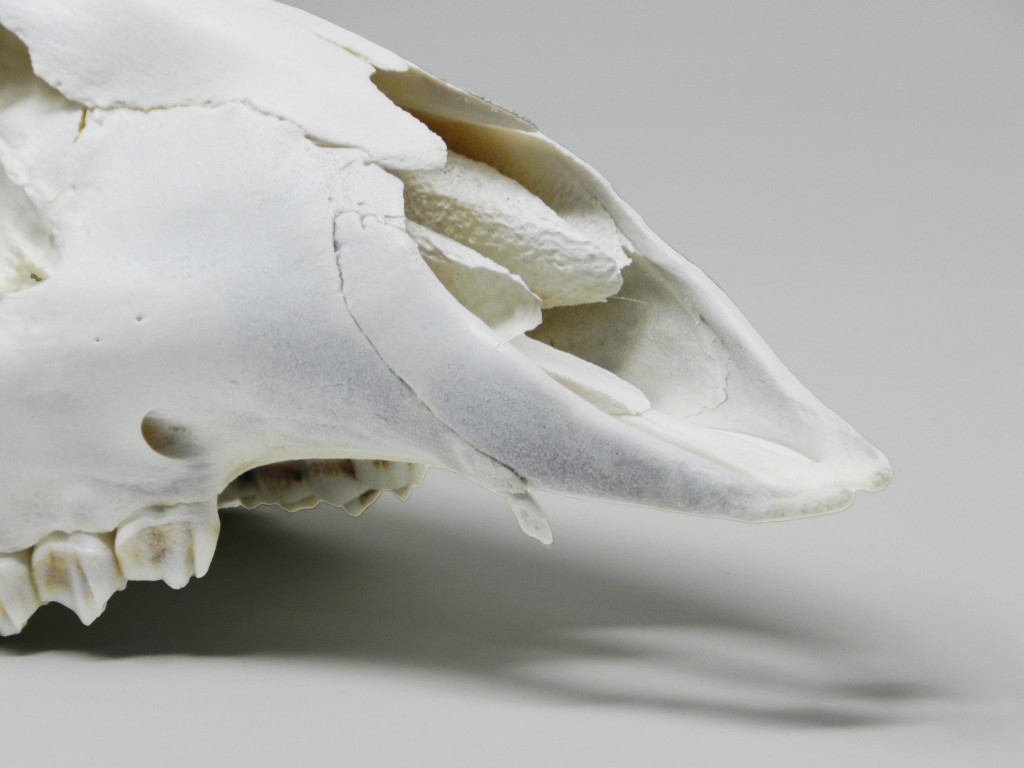Enlarge

By Brian Peterson
In Nebraska, male white-tailed and mule deer are most recognized by their elaborate, showy antlers. While we all have observed deer or pictures of deer with antlers, have you ever encountered a deer with fangs or tusks — canine teeth? If you have, this is extremely rare, possibly a 1 in 10,000 occurrence.
Both whitetail and mule deer have two lower “incisiform” canines which look and function like incisors and are used for foraging and browsing vegetation, but a rare few have upper canine teeth. Over the past 10 years while preparing European skull taxidermy displays, I have encountered three males, two whitetail and one mule deer, that exhibited upper canine teeth. These canines were not visible to me, as they were embedded in the gumline, until the skull was cleaned, so maybe they are more common than reported, at least in Nebraska.
Elk, the largest deer species in Nebraska, still retain canine teeth in both males and females; commonly known as ivories, whistlers or buglers, these teeth are smooth and rounded.
Upper canines in whitetail and mule deer may at first glance resemble the canine teeth in coyotes, bobcats and mountain lions. However, these upper canines are not for catching prey, but remnants of prehistoric tusks in extinct deer species and several Asian species that retain tusks today, for example tufted deer, musk deer, Chinese water deer and muntjacs. Within today’s Asian species, canine tusks are used to fight other males during breeding season or for self-defense against predators.

The occurrence of canines in deer is not well understood. Multiple surveys within the United States estimated the prevalence of canines ranging from 0-4 percent, with the most extensive study conducted in New York State where 18,000 white-tailed deer were examined, and within the population, less than 1 percent contained upper canines. Occurrence of canines varies geographically, and when they occur, it is primarily in males; however, some canines in females have been reported. Canine teeth were first documented in Nebraska by a Nebraska Game and Parks biologist in 1963, when two mule deer (1 male and 1 female) were observed containing canine teeth at a deer check station in North Platte.
The presence of canine teeth is likely a genetic trait, however, the mechanism that expresses this trait is still unclear. In addition, Nebraska deer and elk still possess a prominent black or dark brown patch on their lower jaws where canines would occur. These are present in Asian deer and are thought to emphasize their showy canine tusks to rivals and predators. As deer and elk canine tooth size decreased or disappeared, showy antlers developed and increased in size.
There is still a lot of mystery surrounding canine teeth in deer. Next time you are in the Nebraska woods and are lucky enough to harvest a deer or find a skull, examine the upper jaw for canines. You may have an incredibly rare, 1 in 10,000, sharp piece of prehistoric genetics piercing its way into the present-day population.

Brian Peterson is a biologist at the University of Nebraska at Kearney and coordinates the M.S Biology Online Program. His research focus is white-tailed deer antler metrics. For more information, contact petersonbc@unk.edu. He would like to thank Rick Simonson of UNK Biology and Science Lab Studios, Inc., for taking photos, Jacob Wasser of Outlaw Taxidermy, and his client Sam Hoyt for allowing photos of his mule deer trophy. ■
Brian Peterson is a biologist at the University of Nebraska at Kearney and coordinates the M.S Biology Online Program. His research focus is white-tailed deer antler metrics. For more information, contact petersonbc@unk.edu. He would like to thank Rick Simonson of UNK Biology and Science Lab Studios, Inc., for taking photos, Jacob Wasser of Outlaw Taxidermy, and his client Sam Hoyt for allowing photos of his mule deer trophy
The post Deer Fangs appeared first on Nebraskaland Magazine.
















